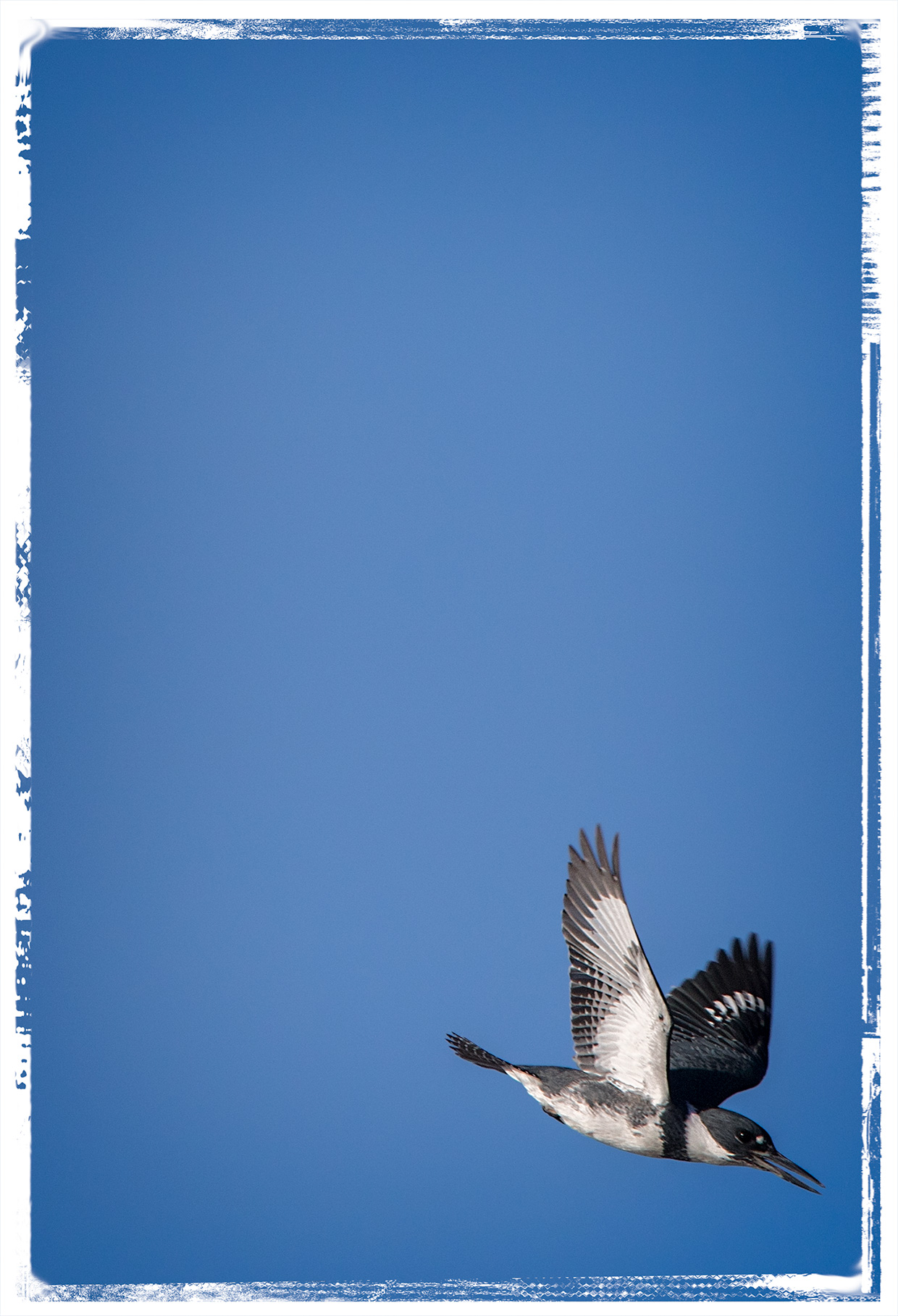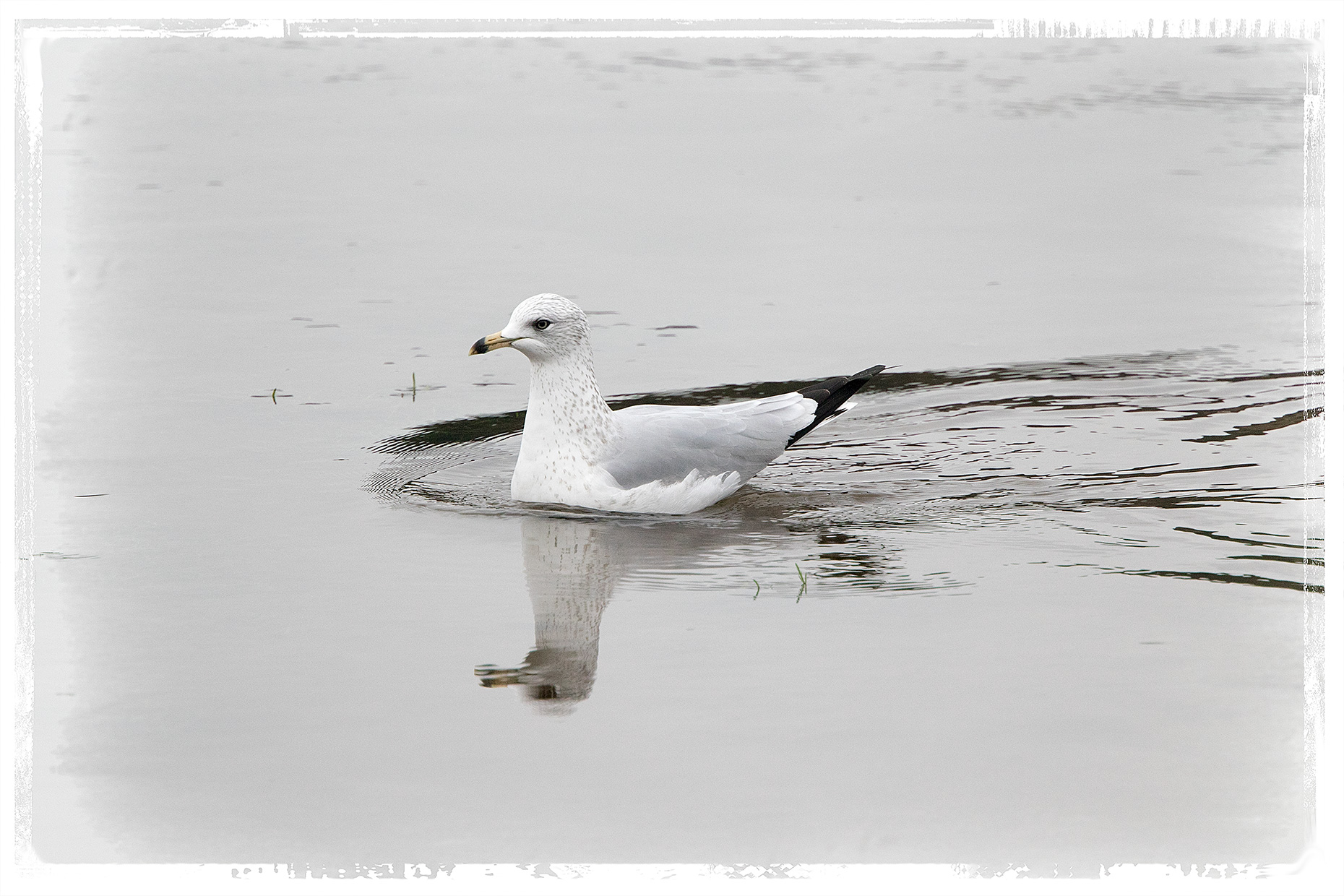Belted Kingfishers, at least the ones at Theler Wetlands, are one of the most elusive birds to photograph, though I occasionally get close to them in the fog before they fly off.
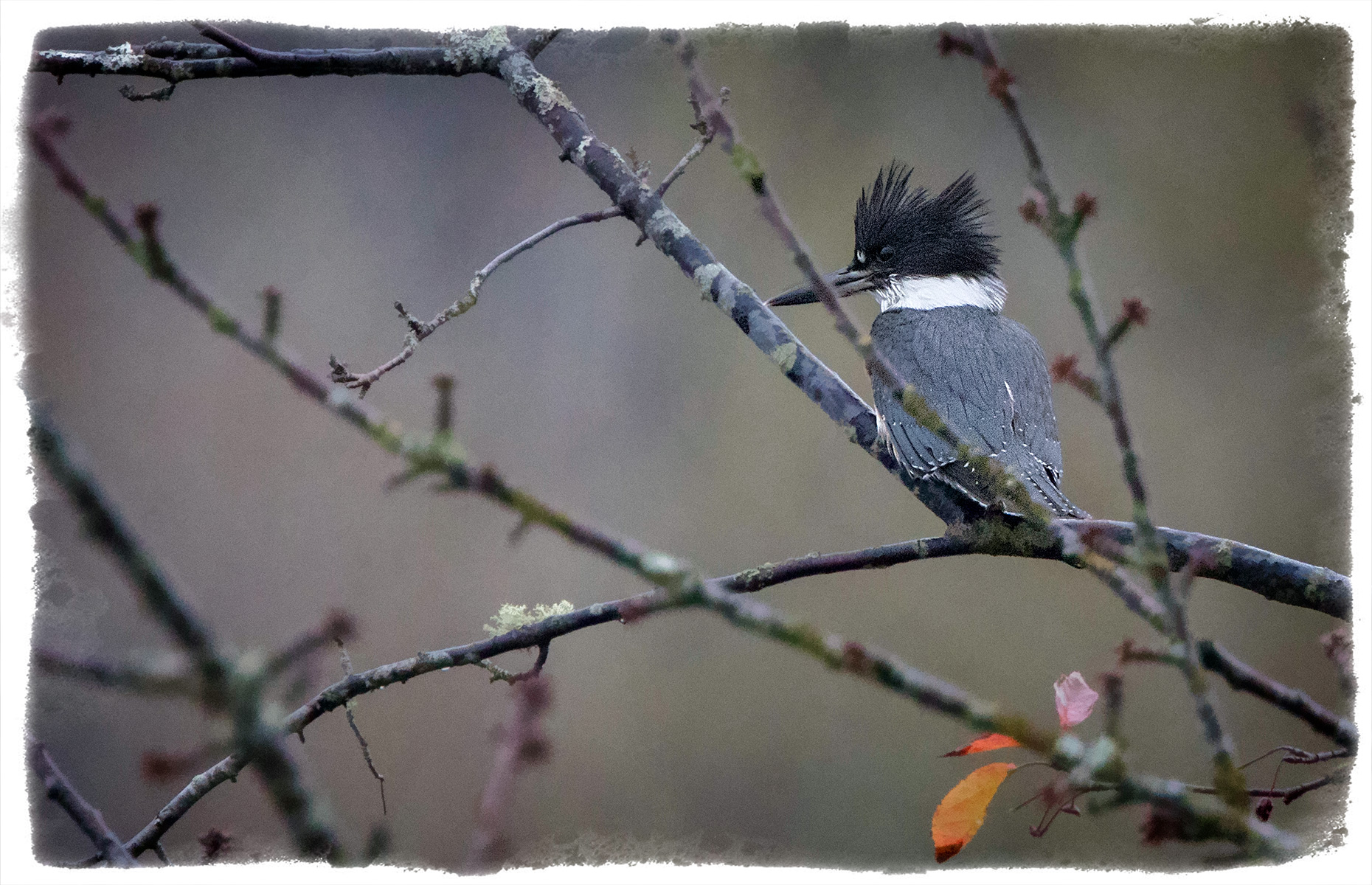
They must realize any photos you capture will have excessive noise requiring longer to correct than the photo is worth unless you’re nearly out of pictures to put up on your site.
Sometimes when there’s a fish run, though, you can capture them hovering over the river
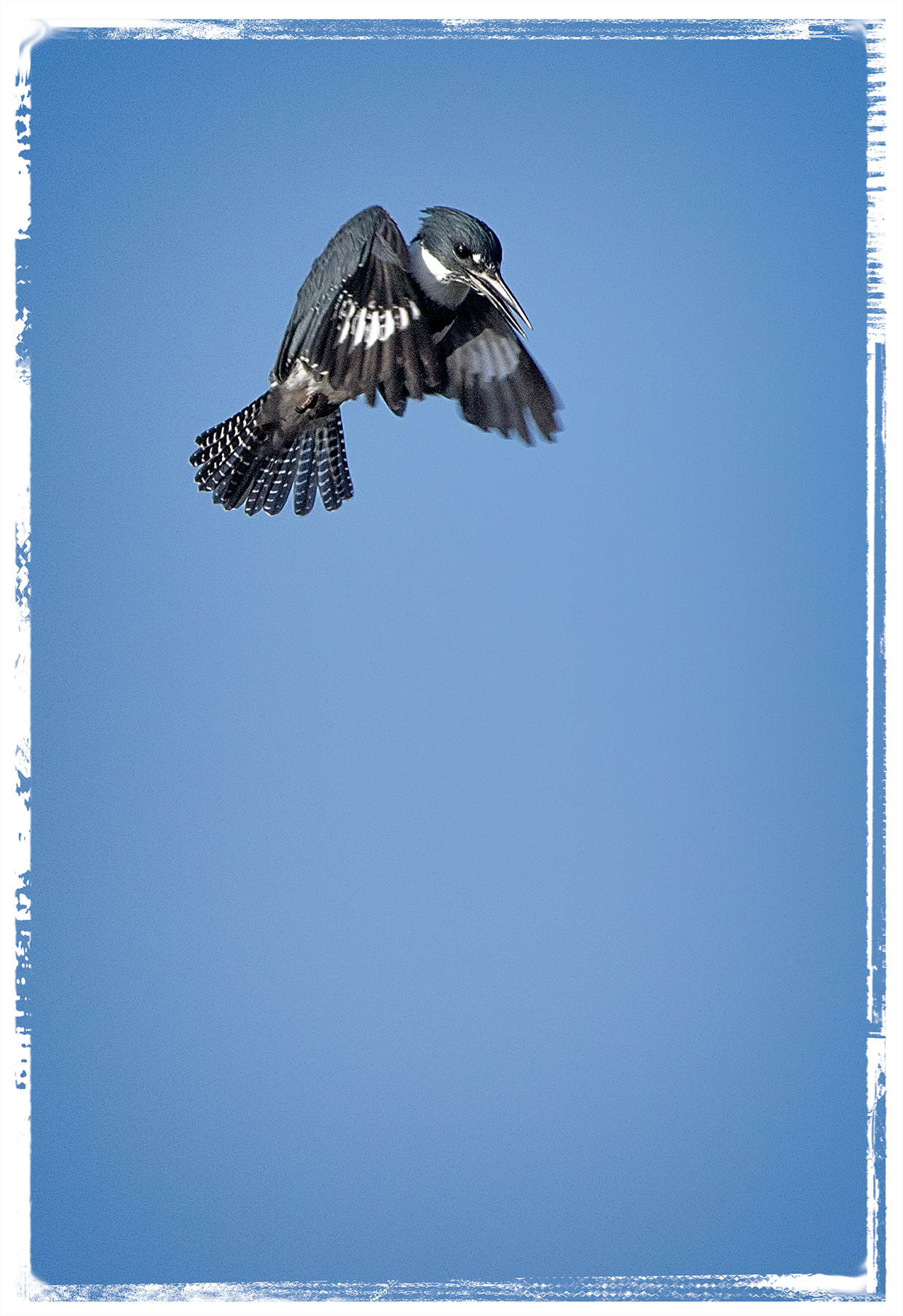
completely indifferent to anyone on the shore.
Then the only question is if you’re lucky enough to have set a fast enough shutter speed to capture them mid-flight
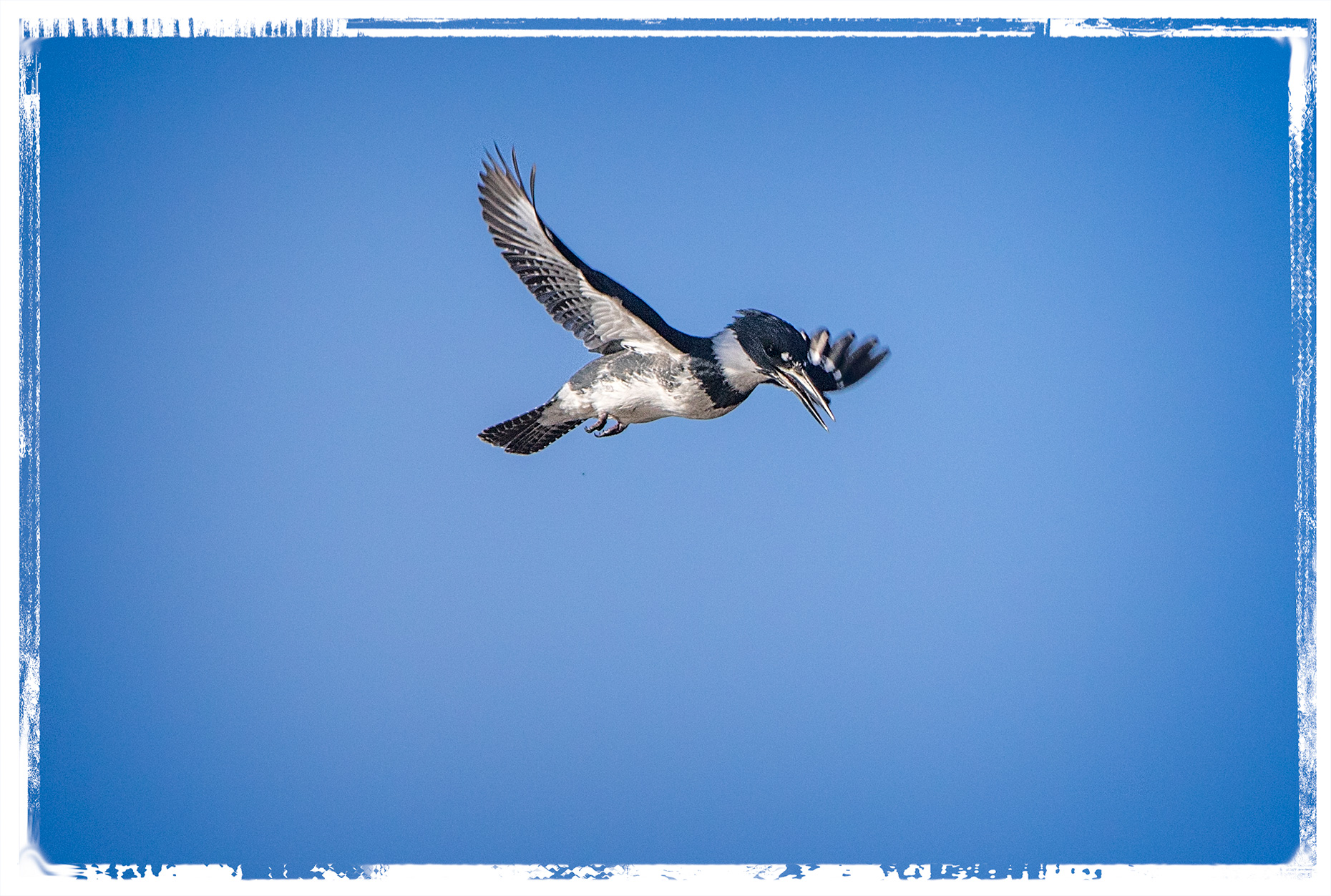
because there’s certainly not enough time to reset the shutter speed before the Kingfisher flies away.
